Table of Contents
ToggleIn the ever-evolving world of business, staying ahead of the competition is like trying to catch a greased pig at a county fair—tricky but oh-so-rewarding. Enter product gap analysis, the secret weapon for savvy companies looking to identify what’s missing in their offerings. It’s not just about filling voids; it’s about discovering opportunities that can catapult a brand to new heights.
Imagine knowing exactly what customers crave but can’t find. With a keen eye on market trends and consumer feedback, product gap analysis helps businesses pinpoint those elusive needs. By addressing these gaps, companies can transform potential losses into lucrative wins, all while keeping their customers smiling. Who wouldn’t want to be the hero that saves the day with the perfect product?
Understanding Product Gap Analysis
Product gap analysis serves as a crucial tool for companies aiming to enhance their market offerings. This analytical approach pinpoints missing elements, allowing businesses to capitalize on new opportunities.
Definition and Importance
Product gap analysis identifies discrepancies between customer needs and existing offerings. It plays a vital role in guiding companies towards fulfilling market demands. By addressing these gaps, organizations can increase customer satisfaction and drive revenue growth. Additionally, this method helps firms stay competitive and agile within their industries. Companies that embrace product gap analysis demonstrate adaptability, positioning themselves for long-term success.
Key Components of Product Gap Analysis
Several components contribute to effective product gap analysis. First, comprehensive market research reveals customer preferences and trends. Second, competitor analysis highlights industry standards, showcasing where gaps exist. Third, customer feedback provides insights on unmet needs and expectations. Collectively, these elements inform strategic decisions, enabling businesses to prioritize product development initiatives. Furthermore, a clear understanding of resources aids in implementing solutions effectively. Together, these key components create a solid foundation for enhancing products and services.
Steps to Conduct Product Gap Analysis
Conducting a product gap analysis involves systematic steps aimed at aligning offerings with customer expectations. Here are the necessary actions.
Identifying Customer Needs
Researching customer needs starts with gathering relevant data from surveys and interviews. Then, analyzing this information helps pinpoint specific preferences and pain points. Measuring satisfaction levels provides insight into areas needing improvement. Observing market trends reveals emerging demands and shifts in consumer behavior. Engaging with customer feedback channels offers direct insight into their experiences and expectations. Prioritizing these needs allows businesses to focus on high-impact opportunities, thereby enhancing overall satisfaction.
Evaluating Current Products
Evaluating current products begins with reviewing existing offerings against customer expectations. Comparing features, pricing, and performance reveals gaps in functionality and market fit. Collecting data on product performance helps identify areas for enhancement. Assessing competitor offerings assists in understanding strengths and weaknesses relative to market standards. Conducting user testing provides feedback on usability and functionality. By prioritizing improvements based on evaluation findings, businesses can refine their products to better meet customer needs.
Tools and Techniques for Product Gap Analysis
Various tools and techniques exist to effectively conduct product gap analysis. These methods help organizations pinpoint deficiencies and adapt their strategies accordingly.
SWOT Analysis
SWOT analysis evaluates strengths, weaknesses, opportunities, and threats related to a company’s products. Identifying strengths allows organizations to leverage their best capabilities for market advantage. Analyzing weaknesses highlights areas needing improvement and informs product adjustments. Opportunities present avenues for growth that firms can exploit to enhance offerings. Assessing threats involves recognizing competitive pressures that could undermine market position. Utilizing SWOT analysis equips businesses with a holistic view, enabling them to make informed, strategic decisions.
Competitive Analysis
Competitive analysis assesses how a company’s products stack up against rivals. By examining competitors, organizations can identify unique selling propositions and areas with potential for differentiation. Gathering data on competitor features, pricing, and customer reviews reveals strengths and shortcomings in the marketplace. This analysis helps prioritize enhancements that meet or exceed customer expectations. Tracking industry trends through competitive analysis ensures that companies remain responsive and agile, positioning themselves advantageously within their sectors.
Common Challenges in Product Gap Analysis
Identifying and addressing challenges in product gap analysis enhances its effectiveness. Misalignment with customer expectations and resource constraints often hinder progress.
Misalignment with Customer Expectations
Companies frequently struggle to align their products with evolving customer expectations. Customers often express specific needs that may not align with existing products. Mismatched expectations lead to dissatisfaction, causing a disconnect between what customers want and what companies offer. Regular engagement through surveys and feedback is essential to bridge this gap. Organizations should prioritize understanding changing preferences to adapt their products accordingly. Success depends on staying attuned to the market voices that reflect customer desires and pain points.
Resource Constraints
Resource constraints present another significant challenge in product gap analysis. Limited budgets or manpower can restrict thorough research or development initiatives. Organizations often face pressures that affect their ability to conduct comprehensive market studies. Prioritization needs to be strategic, focusing on high-impact areas that yield substantial gains with manageable resources. Effective allocation of resources can optimize product enhancements without overwhelming teams. Initiatives that align closely with customer needs help organizations stretch resources effectively while still delivering value.
Product gap analysis is an essential tool for businesses striving to stay competitive. By effectively identifying gaps in their offerings, companies can better align their products with customer needs. This proactive approach not only enhances customer satisfaction but also drives revenue growth.
Utilizing techniques like SWOT and competitive analysis allows organizations to make informed decisions. Addressing common challenges such as resource constraints and misalignment with customer expectations is crucial for success. Embracing product gap analysis empowers businesses to adapt swiftly to market changes and seize new opportunities, ensuring long-term viability in their respective industries.




